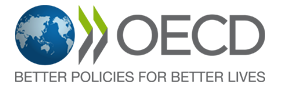 Editorial: After the lockdown, a tightrope walk toward recovery
Editorial: After the lockdown, a tightrope walk toward recovery
The spread of Covid-19 has shaken people’s lives around the globe in an extraordinary way, threatening health, disrupting economic activity, and hurting wellbeing and jobs. Since our last Economic Outlook update, in early March, multiple virus outbreaks evolved into a global pandemic, moving too fast across the globe for most healthcare systems to cope with effectively. To reduce the spread of the virus and buy time to strengthen healthcare systems, governments had to shut down large segments of economic activity. At the time of writing, the pandemic has started to recede in many countries, and activity has begun to pick up. The health, social and economic impact of the outbreak could have been considerably worse without the dedication of healthcare and other essential workers who continued to serve the public, putting their own health at risk in doing so.
Governments and central banks have put in place wide-ranging policies to protect people and businesses from the consequences of the sudden stop in activity. Economic activity has collapsed across the OECD during shutdowns, by as much as 20 to 30% in some countries, an extraordinary shock. Borders have been closed and trade has plummeted. Simultaneously, governments implemented quick, large and innovative support measures to cushion the blow, subsidising workers and firms. Social and financial safety nets were strengthened at record speed. As financial stress surged, central banks took forceful and timely action, deploying an array of conventional and unconventional policies above and beyond those used in the Global Financial Crisis, preventing the health and economic crisis from spilling over into a financial one.
As long as no vaccine or treatment is widely available, policymakers around the world will continue to walk on a tightrope. Physical distancing and testing, tracking, tracing and isolating (TTTI) will be the main instruments to fight the spread of the virus. TTTI is indispensable for economic and social activities to resume. But those sectors affected by border closures and those requiring close personal contact, such as tourism, travel, entertainment, restaurants and accommodation will not resume as before. TTTI may not even be enough to prevent a second outbreak of the virus.
Faced with this extraordinary uncertainty, this Economic Outlook presents two possible scenarios: one where the virus continues to recede and remains under control, and one where a second wave of rapid contagion erupts later in 2020. These scenarios are by no means exhaustive, but they help frame the field of possibilities and sharpen policies to walk such uncharted grounds. Both scenarios are sobering, as economic activity does not and cannot return to normal under these circumstances. By the end of 2021, the loss of income exceeds that of any previous recession over the last 100 years outside wartime, with dire and long-lasting consequences for people, firms and governments.
The pandemic has accelerated the shift from “great integration” to “great fragmentation”. Additional trade and investment restrictions have sprung up. Many borders are closed across large regions and will likely remain so, at least in part, as long as sizeable virus outbreaks continue. Economies are diverging, depending on when and to what extent they were hit by the virus, the preparedness of their healthcare system, their sectoral specialisation and their fiscal capacity to address the shock. Emerging-market economies have also been shaken by the crisis. Commodity prices have plummeted. Large capital outflows, plummeting remittances, weaker healthcare systems and a large share of informal workers have threatened their health, economic and social resilience. Everywhere, the lockdown has also exacerbated inequality across workers, with those able to telework generally highly qualified, while the least qualified and youth are often on the front line, unable to work or laid off, with the effects further compounded by unequal access to social protection. Private debt levels are uncomfortably high in some countries, and business failure and bankruptcy risks loom large.
Extraordinary policies will be required to walk the tightrope towards recovery. Even if growth does surge in some sectors, overall activity will remain muted for a while. Governments can provide the safety nets that allow people and firms to adjust, but cannot uphold private sector activity, employment and wages for a prolonged period. Capital and workers from impaired sectors and businesses will have to move towards expanding ones. Such transitions are difficult, and rarely happen fast enough to prevent the number of failing firms from rising and a sustained period of unemployment. Governments will need to adapt support and accompany the transition, allowing fast restructuring processes for firms, with no stigma for entrepreneurs, providing income for workers in between jobs, training for those laid off and transitioning to new jobs, and social protection for the most vulnerable. We have previously called for a rise in public investment in digital and green technologies to promote long-term sustainable growth and lift demand in the short term. This is even more urgent today with economies having been hit so hard.
Today’s recovery policies will shape economic and social prospects in the coming decade. Ultra-accommodative monetary policies and higher public debt are necessary and will be accepted as long as economic activity and inflation are depressed, and unemployment is high. However, debt-financed spending should be well targeted to support the most vulnerable and the investment necessary for a transition to a more robust economy. Public support needs to be transparent and fair. Corporate support from governments must come with transparent rules, with private bond and equity holders taking a loss when government steps in, so that their rewards for taking risks are not excessive. Improving employer-employee relationships should accompany ongoing public support for workers and firms, paving the way for stronger social cohesion and ultimately a stronger and more sustainable recovery.
The recovery will not gain steam without more confidence, which will not fully recover without global cooperation. Confidence needs to be boosted both at the national and international levels. Household saving rates have soared in most OECD countries, with high uncertainty and rising unemployment holding back consumption. Trade disruptions and the associated threats to supply chains also impede the necessary reduction in uncertainty for investment to resume. Global cooperation to tackle the virus with a treatment and vaccine and a broader resumption of multilateral dialogue will be key for reducing doubt and unlock economic momentum. The international community should ensure that when a vaccine or treatment is available it can be distributed rapidly worldwide. Otherwise the threat will stay. Likewise, resuming a constructive dialogue on trade would lift business confidence and the appetite for investment.
Governments must seize this opportunity to engineer a fairer and more sustainable economy, making competition and regulation smarter, modernising government taxes, spending, and social protection. Prosperity comes from dialogue and cooperation. This holds true at the national and global level.
10th June 2020

Laurence Boone
OECD Chief Economist
0 Comments